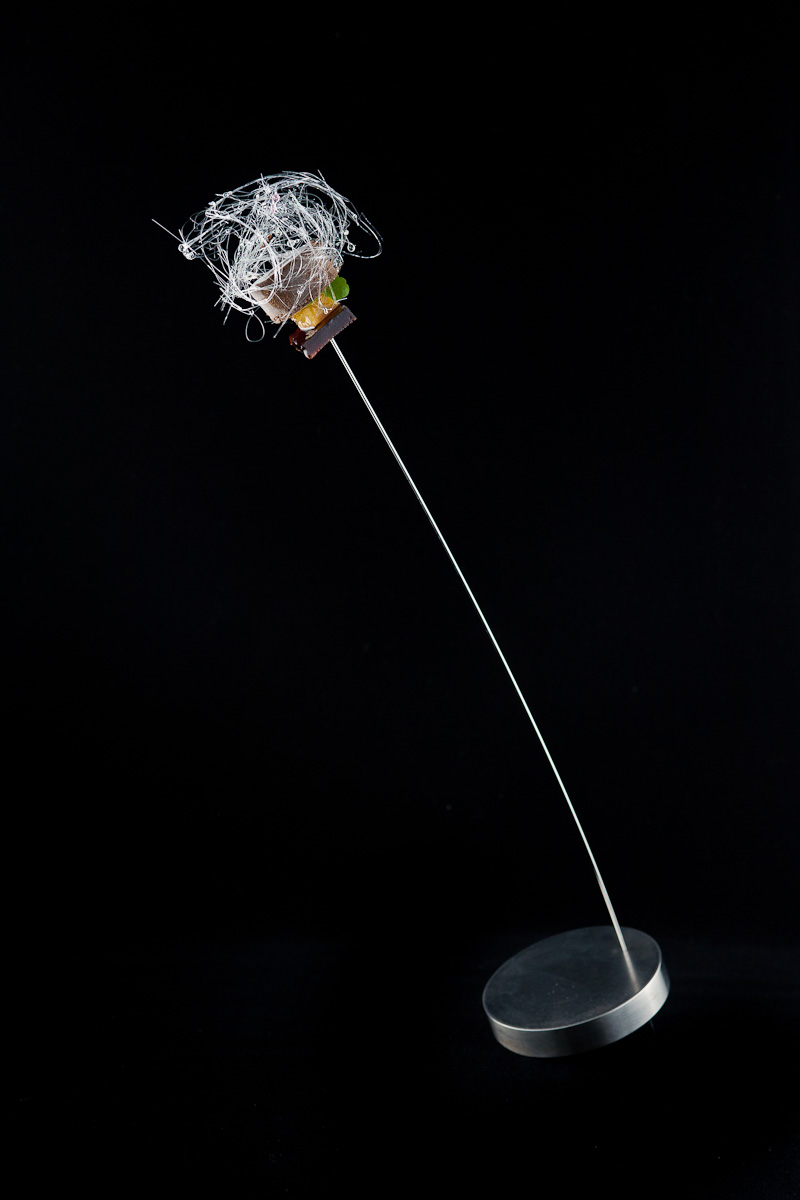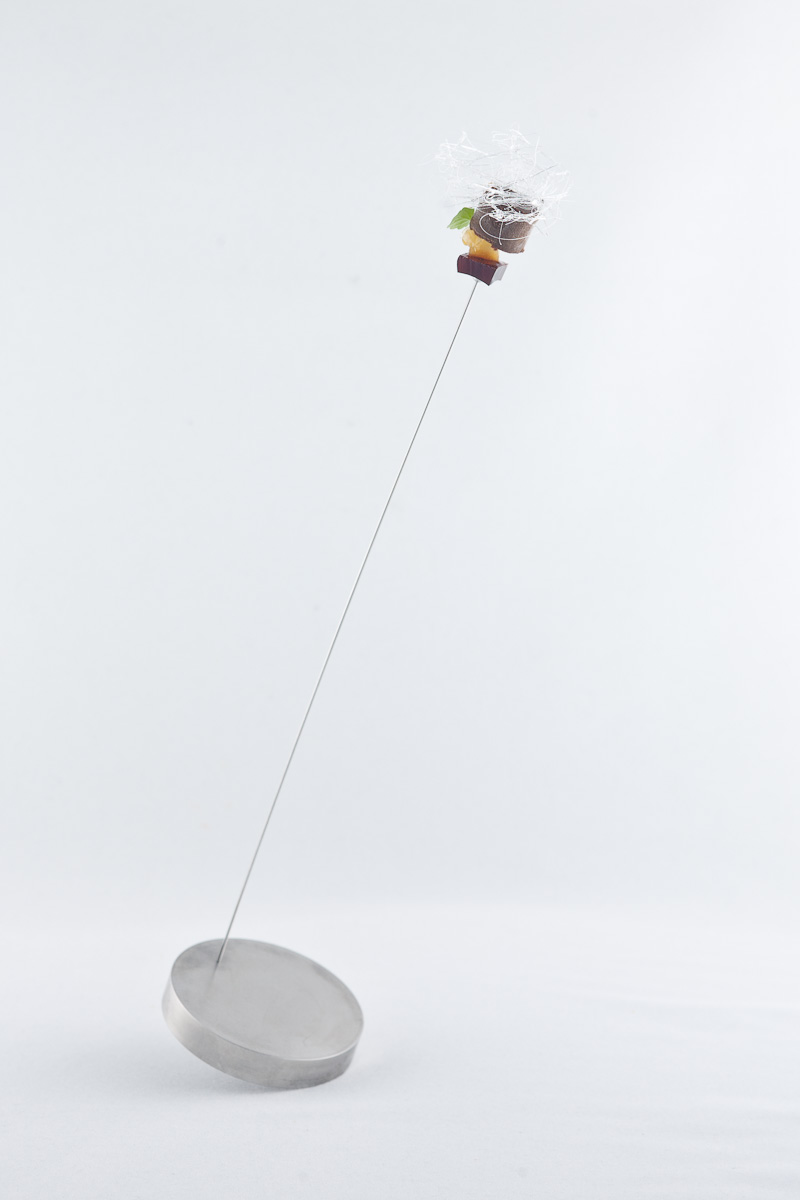
It won’t come as much of a surprise that after that last dish, I was interested in doing something a little simpler. While the tomato dish was unarguably fun to try, there’s something relaxing to me about making and eating a dish like this one, which highlights flavors atomically and is eaten in one bite. I guess it’s a little like playing Halo 3 vs. playing Angry Birds: the latter doesn’t require as much attention or decision-making. It sounds silly, but large dishes with lots of ingredients stress me out a little, because my uber-nerdy side needs to know I’m exploring every flavor permutation there is to be found. With this one, I can go on autopilot and just concentrate on enjoying it.
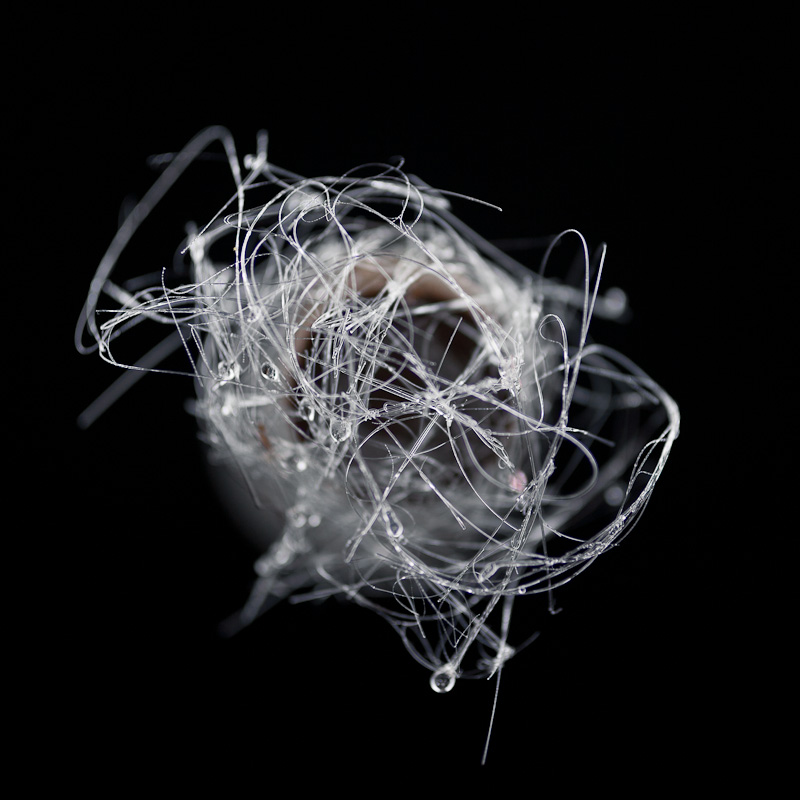
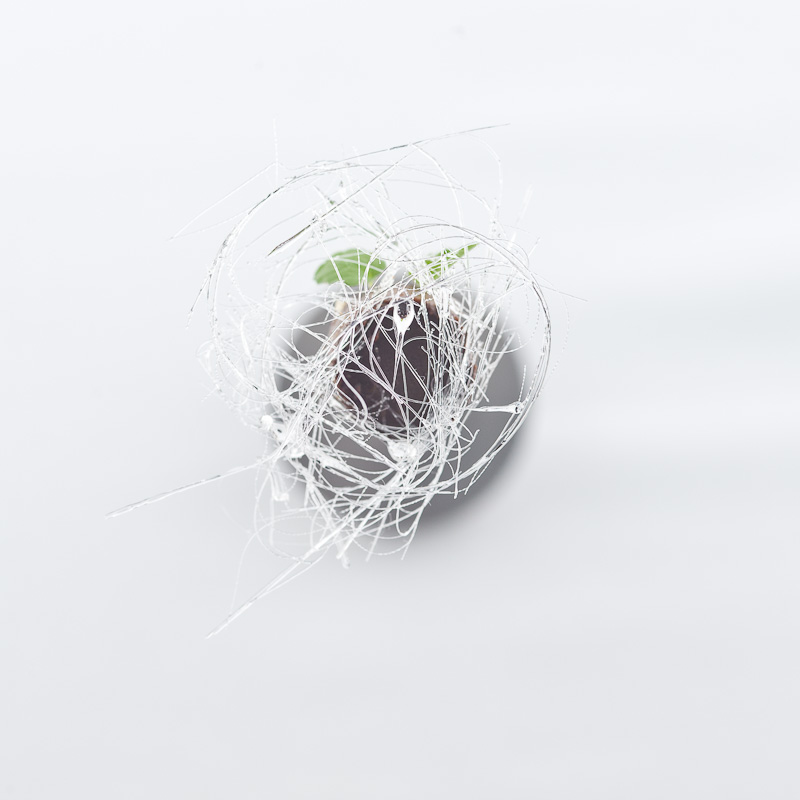
And enjoy it I did! This dish has only a handful of components; a piece of chewy muscovado candy is threaded onto an Antenna service piece. It’s topped with a small cube of orange confit and some anise hyssop. Atop this is a small plug of “licorice cake”, which is crowned with a nest of spun sugar.
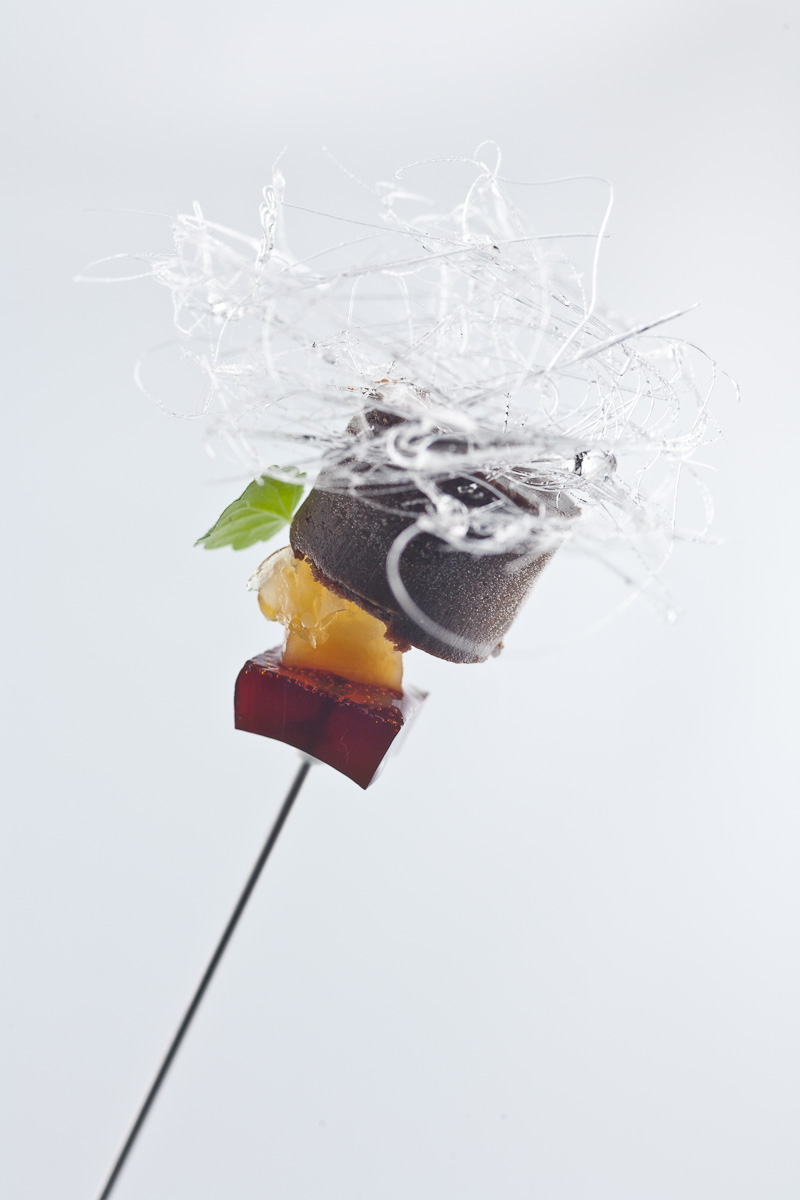
I use “air” “quotes” around “licorice cake” because this thing isn’t exactly just that. I start by making a batter of eggs, milk, sugar, and dried licorice extract powder. This mixture is baked in the oven until it takes on a spongy, gingerbread-like quality. There isn’t a ton of leavening involved, so the cake is quite dense. After it cools, I break it up and mix it into a liquid base of cream, sugar, glucose, licorice syrup, and gelatin, and heat it until the whole thing turns into a magical cakey sludge. I strain this through a chinois into a pan, and freeze the concoction. What I end up with is sort of like a cake-flavored ice cream. The gelatin serves as a stabilizer to keep the mixture from turning into ice, and also helps keep it together as it warms up. The result is something that oddly feels like it disappears when eaten…it’s so delicate and fine in texture that as soon as it hits your tongue it collapses into a cool gingerbready-licorice-y sensation that coats the inside of your mouth. Super tasty.
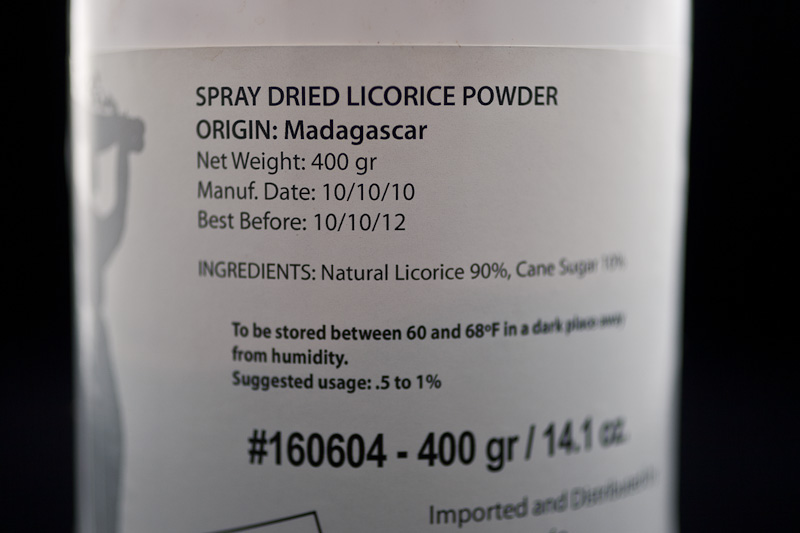
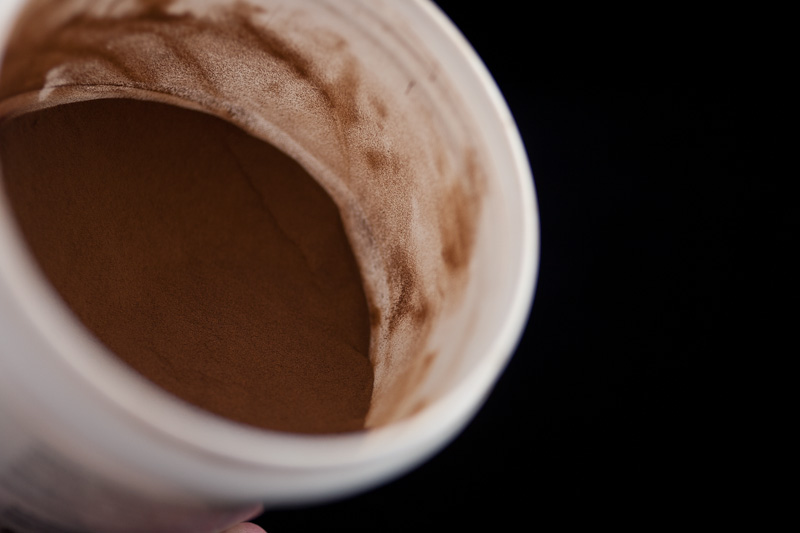
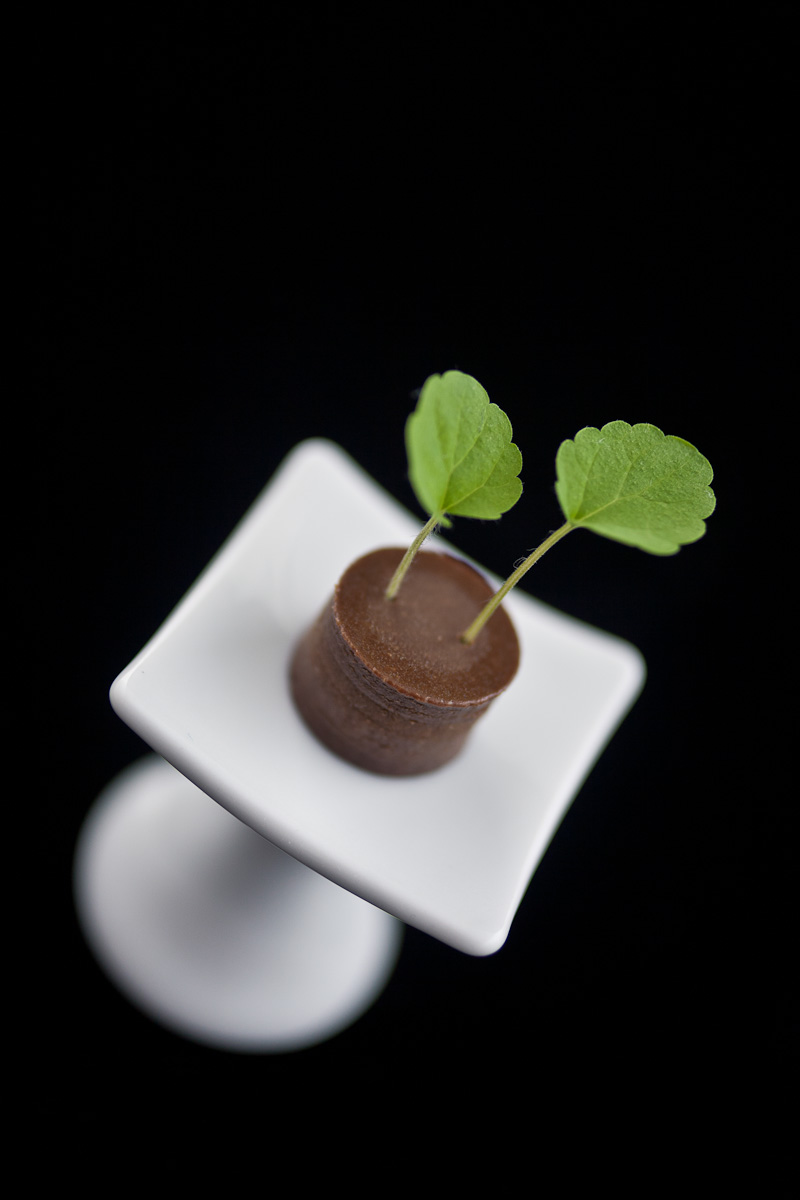
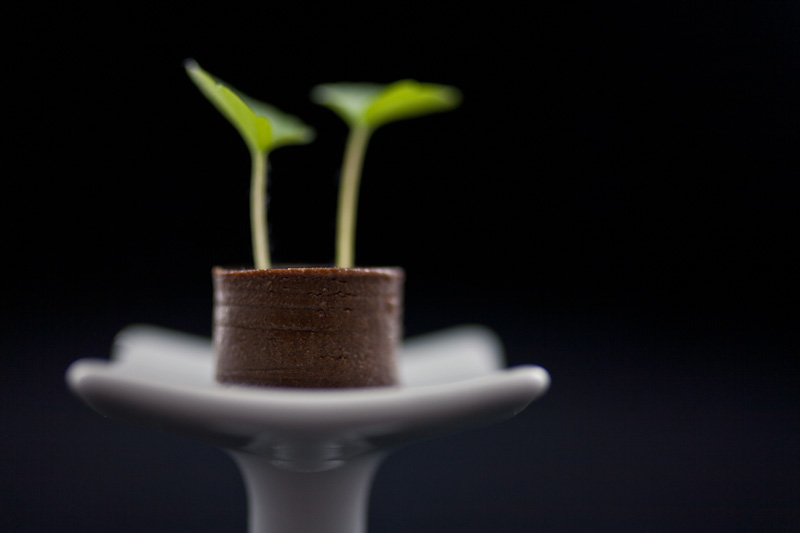
The confit orange was curious to me; I thought confit inherently involved cooking in fat, but the definition is looser than that. It basically just generically describes cooking something in a liquid in which it is also preserved. In the case of an orange, I blanch the orange a few times in boiling water to ease the bitterness of the rind, then cook it very slowly in a bath of sugar, water, and an alcohol called D’Aristi Xtabentun. The slow-cooking process allows for the sugar to penetrate the orange slices to their cores, which allow them to be preserved in the cooking liquid for a while (though the preservation isn’t really what I’m most interested in here…I’m most interested in getting the very distinctive texture/flavor this process allows).
I opted to use a slow-cooker for my simmering process rather than letting my stove stay on for hours on end (plus I was doing this on a worknight, and didn’t want to be up until 1am babysitting a burner). This worked pretty ok with one exception: my slow-cooker doesn’t allow for much evaporation when the lid is on, which I think might be a desirable thing in this case to help concentrate flavors. What I ended up with was beautifully tender but tasted less intense than I imagine it should have.
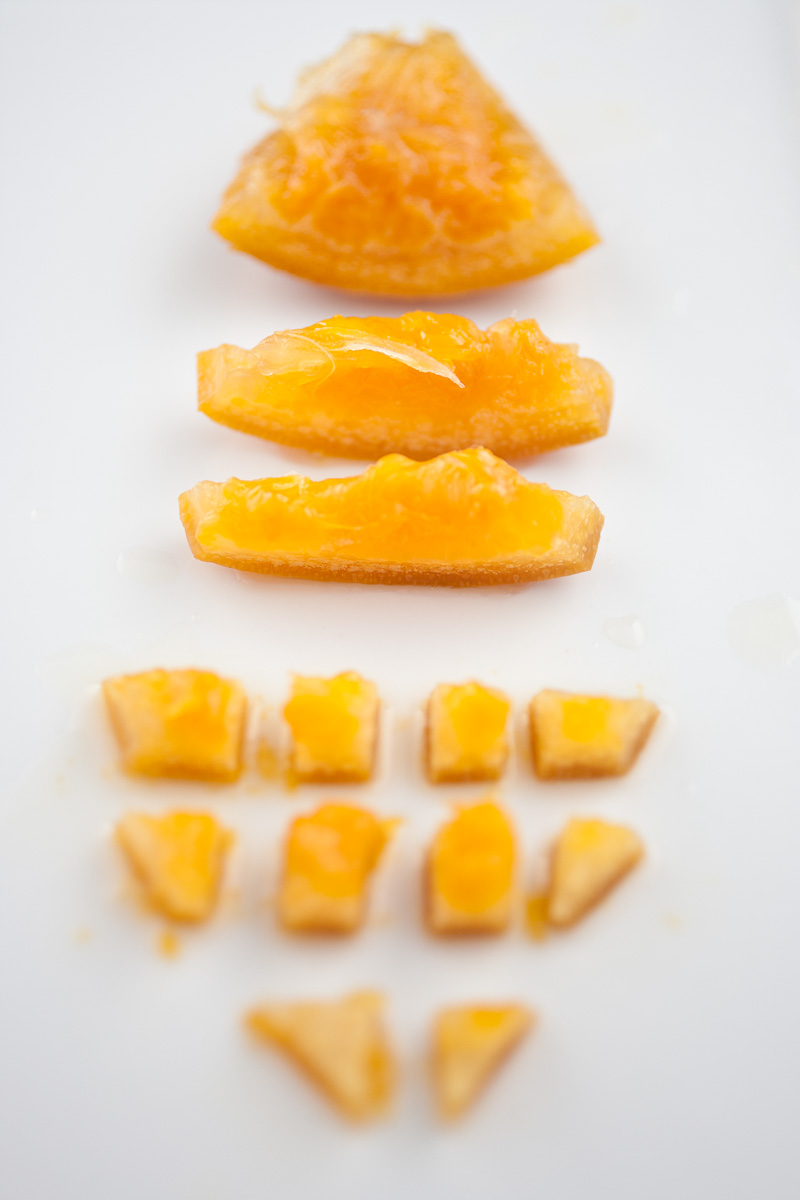
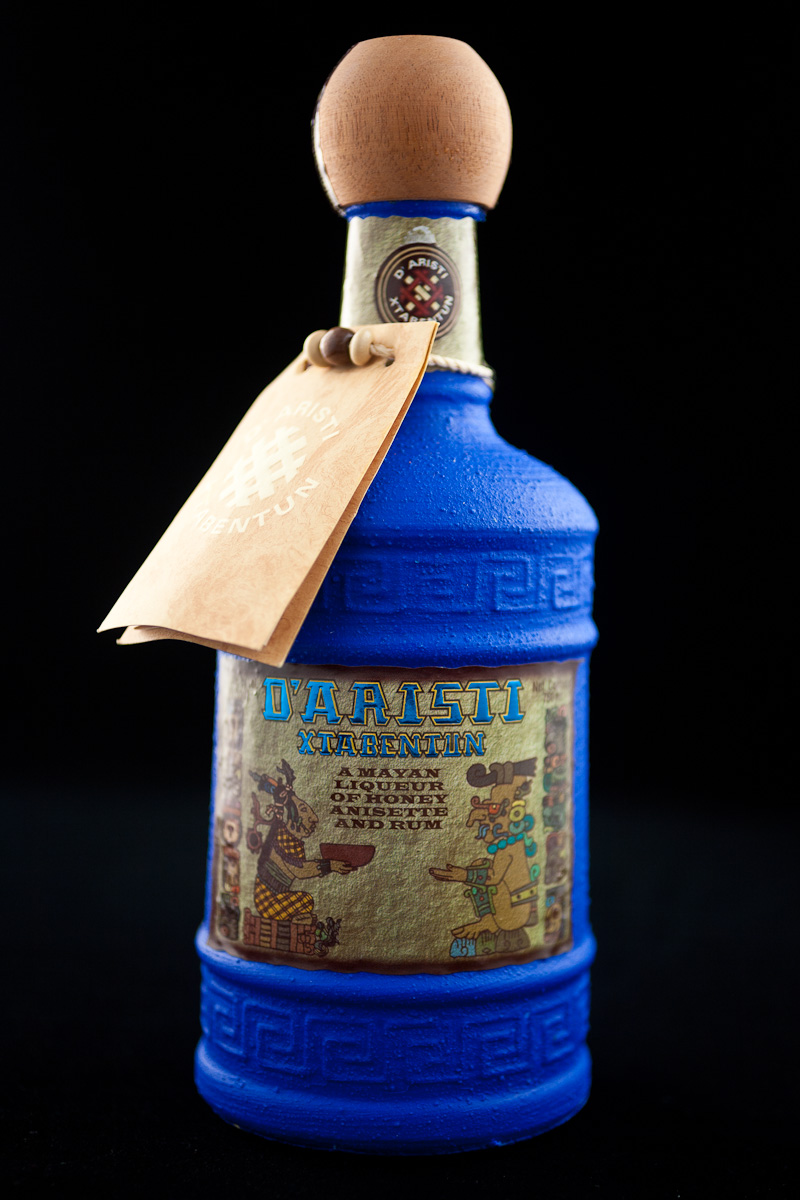
The muscovado candy was relatively straightforward to make; I cooked some muscovado sugar with water and pectin until the mixture yielded a firm gel when cooled, then cut it into small slices. The texture is sort of like a firm gummy bear, and the flavor is richly molasses-ey.
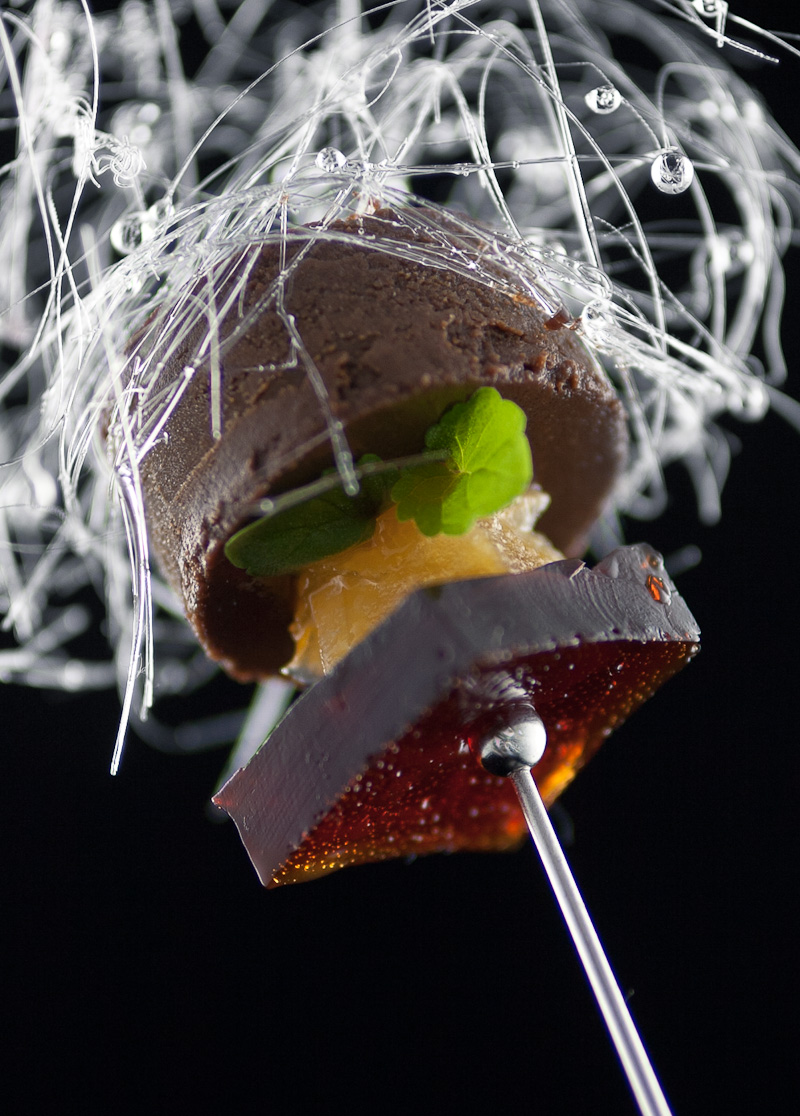
Finally, the nest of spun sugar is made by melting some isomalt (used because, as a sugar alcohol, it won’t caramelize and stays perfectly crystal clear), dipping a whisk in the molten sugar, and passing it rapidly back and forth between two pan handles. This is messy as hell, and also super-fun.
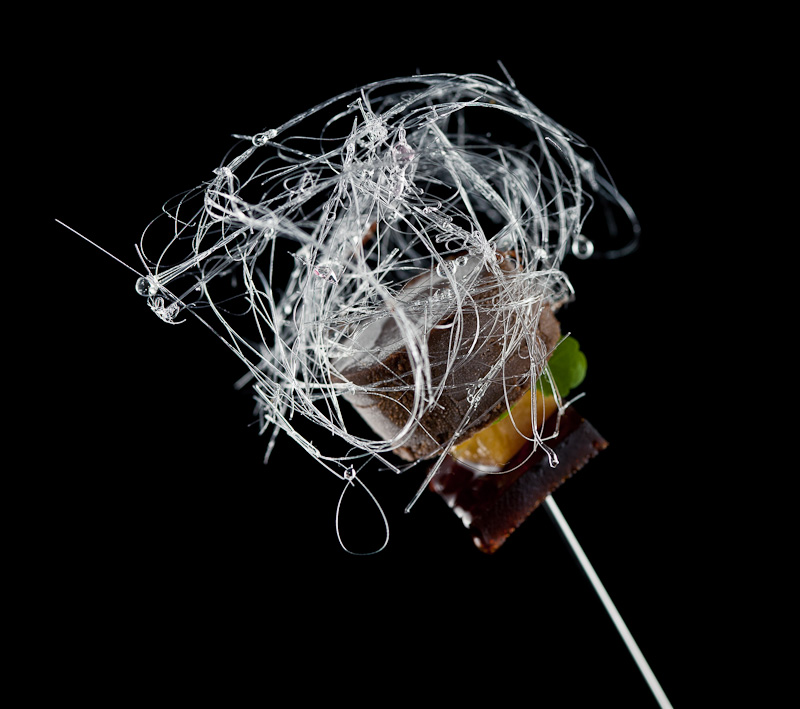
I really love all of these flavors; I love anise, licorice, molasses, and the spicy orange flavor the Xtabentun offers the confit orange. Sarah, on the other hand, exactly hates it. I probably ate about 6 servings of this one, I loved it so much. Sarah munched hers for a moment, wrinkled her nose, swallowed begrudgingly, and promptly went to get a big glass of water. “That’s the worst thing I’ve ever eaten” she muttered through gulps of water. Admittedly it’s a pretty strong taste, and tends to be a decisive one, so Alinea using this as a dessert course seems like a pretty ballsy move.
